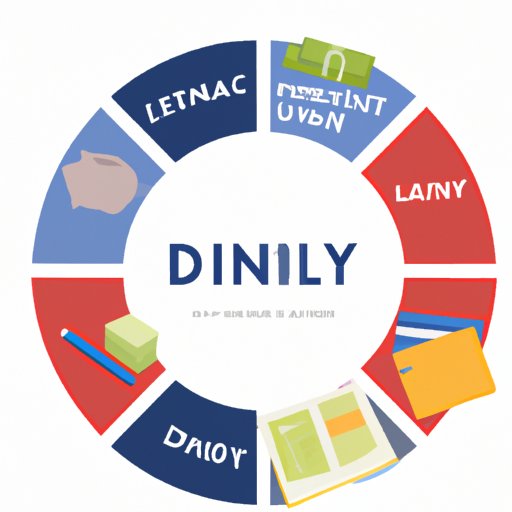Introduction
Financial literacy is the ability to understand and use various financial skills, including budgeting, investing, and setting financial goals. With an increased emphasis on personal finance education, understanding and practicing these skills can help individuals make more informed decisions about their money. The purpose of this article is to provide steps for improving one’s financial literacy.

Make a Budget and Track Your Spending
Creating a budget is one of the most important steps to take when improving one’s financial literacy. A budget allows you to track your income and expenses so you can better manage your finances. There are several benefits to creating a budget, such as tracking spending to identify areas where money can be saved and helping you reach specific financial goals. To create a budget, start by writing down all of your expected monthly income and fixed expenses. Then, list any variable expenses that change from month to month. Once you have listed all of your income and expenses, subtract your total expenses from your total income. If the difference is positive, you have extra money each month that can be used to pay down debt or save for future goals. If the difference is negative, you need to find ways to reduce your expenses or increase your income. In addition to creating a budget, it is important to track your spending habits over time in order to identify patterns that may be causing you to overspend.

Learn the Basics of Investing
Investing is another key component of financial literacy. There are several different types of investments, such as stocks, bonds, mutual funds, and exchange-traded funds (ETFs). Each type of investment carries its own risks and rewards, so it is important to do research before investing in order to determine which option is right for you. Investing also has several benefits, such as potentially earning higher returns than traditional savings accounts and diversifying your portfolio. When investing, it is important to develop a strategy that aligns with your goals and risk tolerance. For example, if you are looking for steady, long-term growth, investing in stocks may be a good option. However, if you are looking for short-term gains, investing in bonds may be a better choice. It is also important to remember to diversify your investments in order to minimize risk.
Automate Your Savings
Automating your savings is another effective way to improve your financial literacy. Automating your savings allows you to set aside money each month without having to think about it. This is especially helpful if you tend to forget to save or if you struggle to stay disciplined. There are several benefits to automating your savings, such as helping you reach your financial goals faster and reducing the temptation to spend money on unnecessary items. To automate your savings, start by setting a goal and determining how much you need to save each month to reach it. Next, decide where you will save your money and open an account. Finally, set up automatic transfers from your checking account to your savings account on a regular basis.
Understand Credit and Debt
Understanding credit and debt is an essential part of financial literacy. There are two main types of credit: secured and unsecured. Secured credit is backed by collateral, such as a car or house, while unsecured credit is not backed by any asset. Having good credit can help you qualify for lower interest rates on loans and mortgages, as well as other financial products. To improve your credit score, start by making sure all of your bills are paid on time. You should also keep your credit utilization low, which means using less than 30% of your available credit. Additionally, avoid opening too many new accounts at once and check your credit report regularly for errors.

Utilize Financial Planning Tools and Resources
There are numerous financial planning tools and resources available to help individuals become more financially literate. These include budgeting apps, retirement calculators, investment tracking software, and financial advice websites. Utilizing these tools and resources can help you make more informed decisions about your money and reach your financial goals faster. To get started, research the different types of financial planning tools and resources available and determine which ones best fit your needs. From there, set up accounts and start taking advantage of the features offered by each tool or resource.
Set Goals and Create a Plan to Reach Them
Finally, setting financial goals and creating a plan to reach them is an important step in improving one’s financial literacy. Setting financial goals gives you something to work towards, and having a plan helps you stay organized and motivated. There are several benefits to setting financial goals, such as staying on track with your budget and saving more money. To set financial goals, start by determining what you want to accomplish, such as saving for a down payment on a house or paying off debt. Then, break down the goal into smaller, achievable steps. Lastly, create a timeline for reaching your goal and track your progress along the way.
Conclusion
In conclusion, improving one’s financial literacy requires dedication and effort. Taking the time to learn the basics of budgeting, investing, and setting financial goals can help individuals make more informed decisions about their money. Additionally, utilizing financial planning tools and resources, automating your savings, and understanding credit and debt can help you reach your goals faster. By following these steps, you can begin to take control of your finances and improve your financial literacy.
(Note: Is this article not meeting your expectations? Do you have knowledge or insights to share? Unlock new opportunities and expand your reach by joining our authors team. Click Registration to join us and share your expertise with our readers.)
